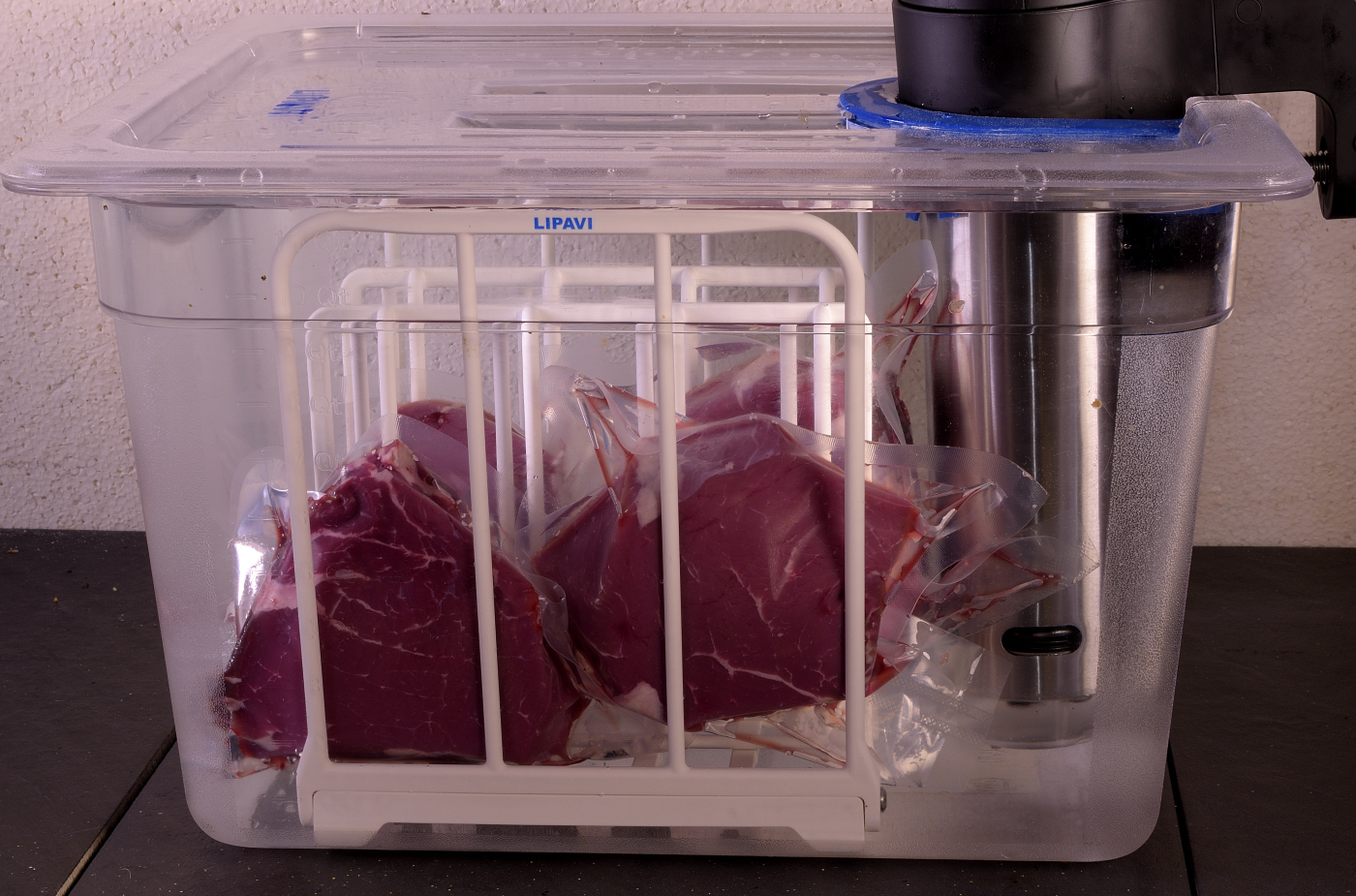
Above: Lipavi C10 container, N10 polycarbonate racks. Lipavi C10L-UNIR lid.
Actual prep time: 1 hour
Level of difficulty: 2.25
Serves 4
Top sirloin steaks are commonly available in the butcher’s case at the local market. They range in shape, size and conformation subject to the expertise of the butchers and profit driven yield requirements. “Cost-effective” portioning can result in multiple muscles with opposing grain appearing in the same steak. This can create a steak that is tender in some areas and chewy in others. Sous vide can overcome most of these issues.
Purchasing an entire top sirloin, separating the individual muscles and cutting the steaks yourself can yield higher quality along with considerable savings. The top sirloin can also be cut into roast-sized pieces, including the highly prized coulotte/picanha. Click HERE for a detailed explanation of how to separate this lean, reliable cut from the primal before you just grab a package from the refrigerated bin.

Above: Something to look forward to!
Procedure:
Preheat the sous vide bath to 129 F/54 C.
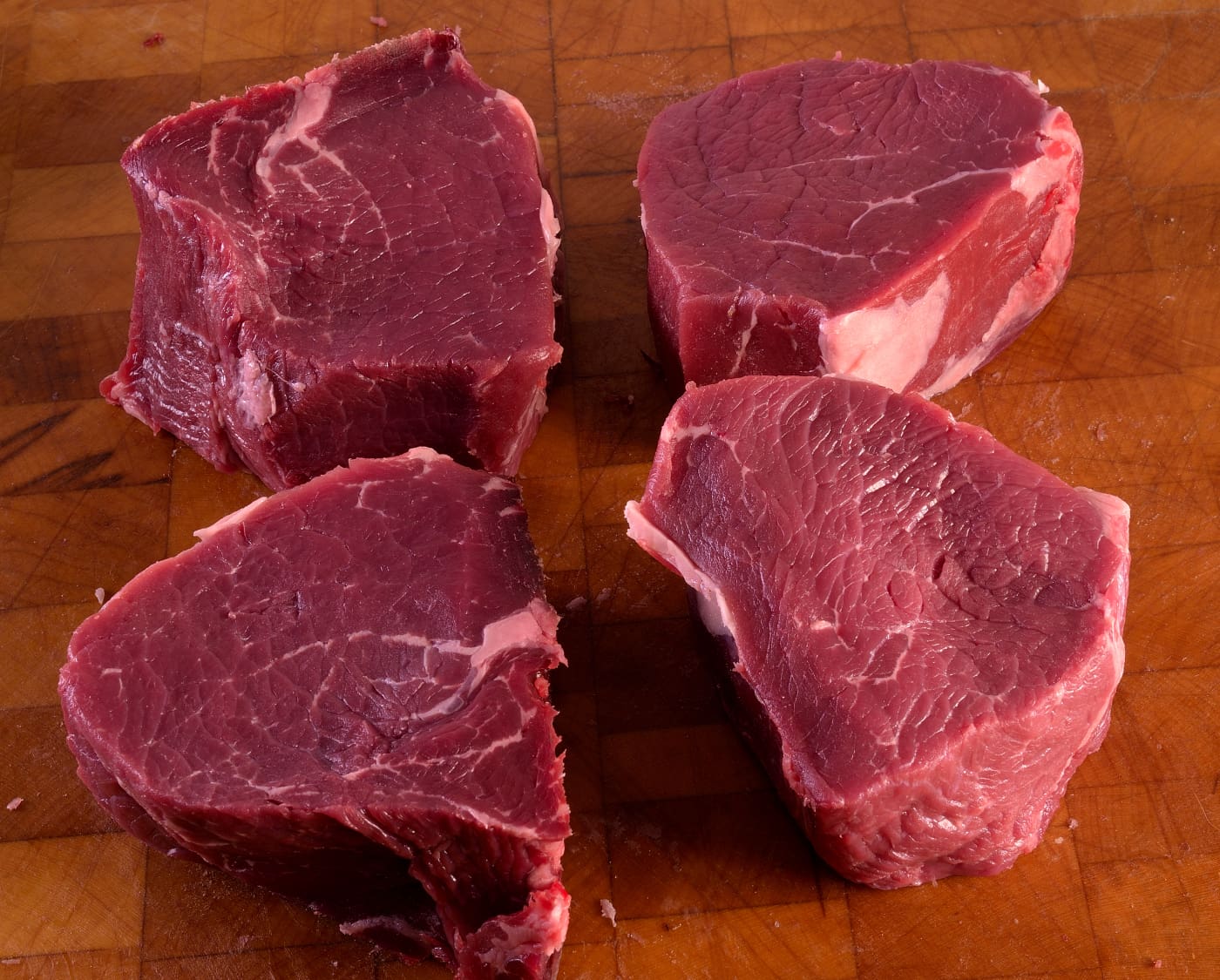
Vacuum seal the individual steaks in heat rated pouches and load into a suitable rack. We use a Lipavi N10 polycarbonate.
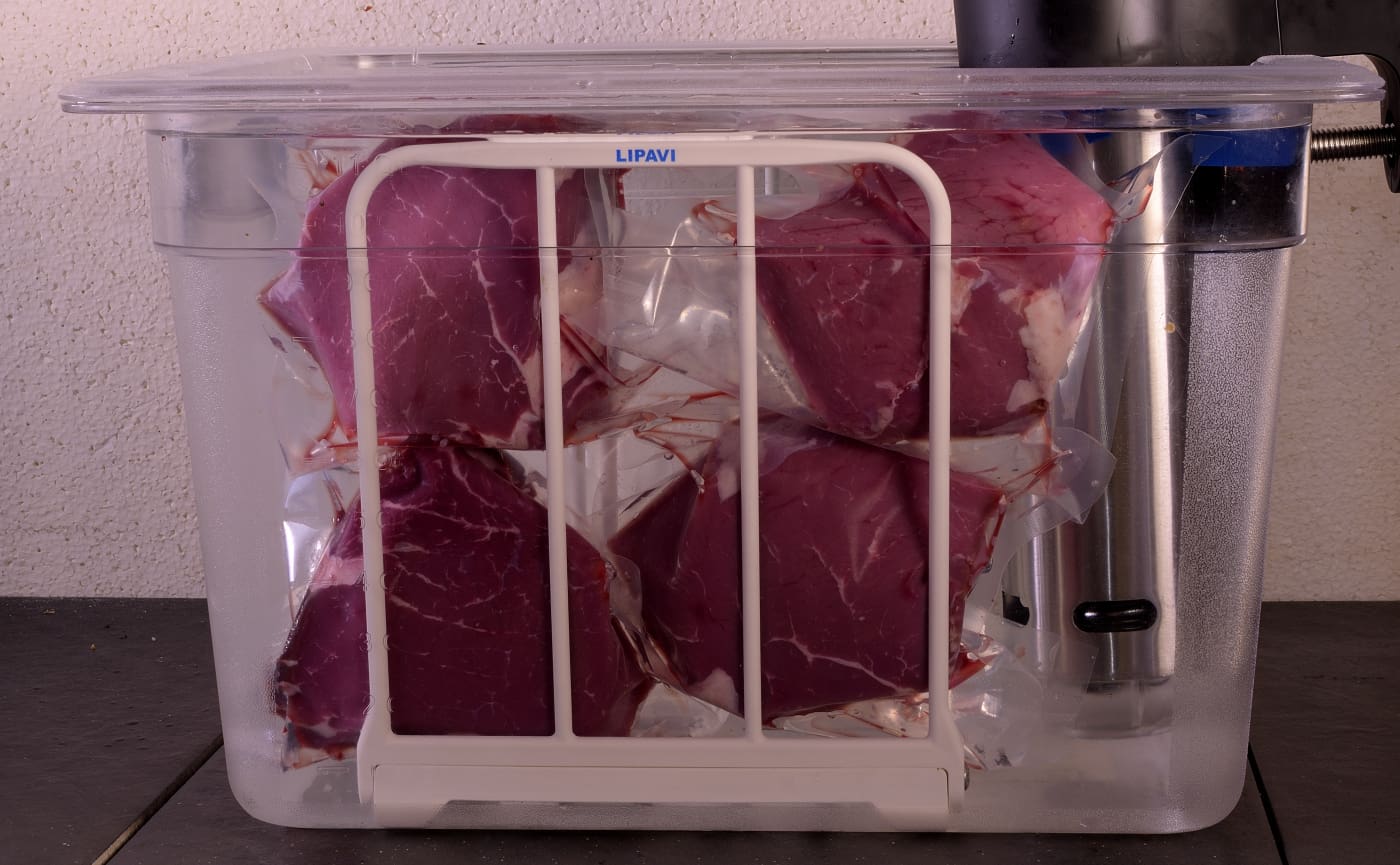
Submerge into the bath and process at 129 F/54 C for 6 hours. Elevating the temperature will increase the appearance of doneness and hasten tenderization somewhat. For a complete explanation of the appearance of doneness, visit HERE. Time parameters may vary +/-1 hour because tenderness is subjective and a clock cannot accurately measure it. The interval required to achieve desirable results may vary slightly from one batch to another. This 45 day Umai aged top sirloin primal yielded steaks that were tender after 5 hours of processing. Keep in mind that aging is optional and is not necessary to achieve an excellent outcome.
Exploring the options
After processing, the steaks can be removed from the bag, seasoned according to the method explained HERE, seared and served. Harvest the juices and clarify them according to THIS method. If service is delayed, the temperature in the bath can be reduced to 124F/51C and maintained for up to 3 hours without sacrificing quality or wholesomeness.
The other option is to remove the packages from the bath and submerge in iced tap water until they achieve 70 F/21 C–about fifteen minutes. They can then be refrigerated at 40 F/4 C until you are ready to proceed to the next step. The chilled steaks can be refrigerated up to 2 weeks without sacrificing quality. At service, they are seasoned, seared and served. Use a probe thermometer to assure an internal temperature of 125F/52C (mouth hot) until you “get the hang of it.”
Day of service

If the steak has been refrigerated to 40F/4C, submerge the packages in hot tap water (110 F/43 C) or a working sous vide bath to melt the gel in the pouch. Remove a steak from the bag and reserve the juices.

Pat the steak(s) dry and place on a heat proof rack. We used a Lipavi L10. These stainless steel racks were custom designed for sous vide processing but are great for multiple purposes– they are water proof, rust proof, dishwasher proof and smoker/oven proof.
Seasoning!
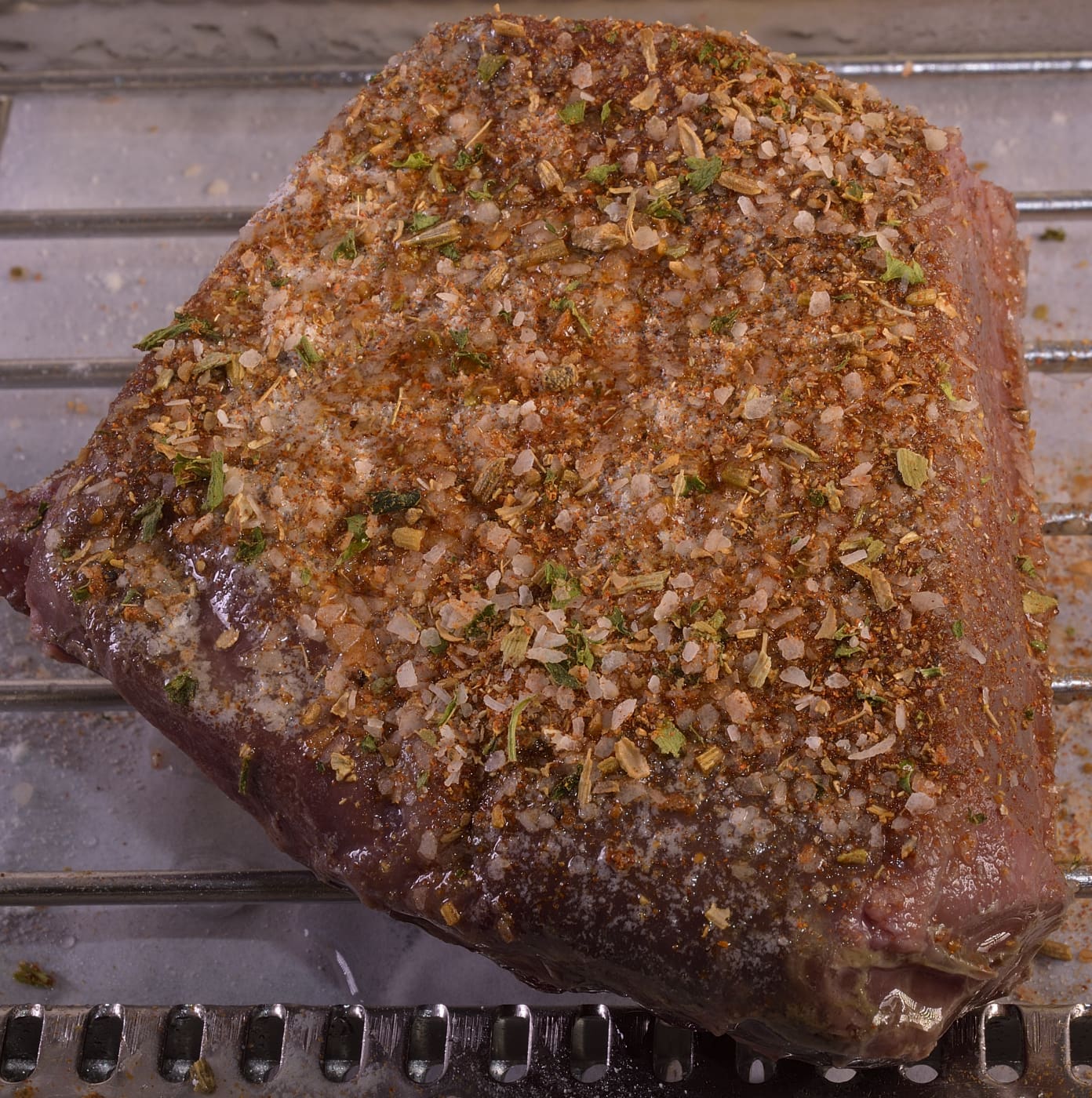
Use the method explained HERE to create a well seasoned and durable crust. Do not underestimate the importance of this step! In the picture, our own Grind House Seasoning Blend.
Juices

Clarify the bag juices according to the method explained HERE. Reserve for future use. In the case of a single steak, there may be less than 1 oz/30 ml of juices in the pouch, in which case they can be discarded.
Service:
Preheat a skillet to approximately 350F/176C. Add enough vegetable oil to cover the bottom of the pan. Do not crowd the steaks in the pan–this can result in under-searing and overcooking. The best policy is to sear one steak at a time until the desired appearance is achieved. If the steaks are fresh out of the bath, 30 seconds on each side is usually sufficient.
If the steaks are 40F/4C, the process will take approximately 60 seconds on each side, depending of course on thickness. A probe thermometer can be used to make the center achieves 125F until a “feel” for it is acquired. After searing, the steaks should be allowed to rest for two minutes so that the heat of the steak’s exterior can work its way into the steak’s interior. Just about enough time to gather all the other components of your presentation!
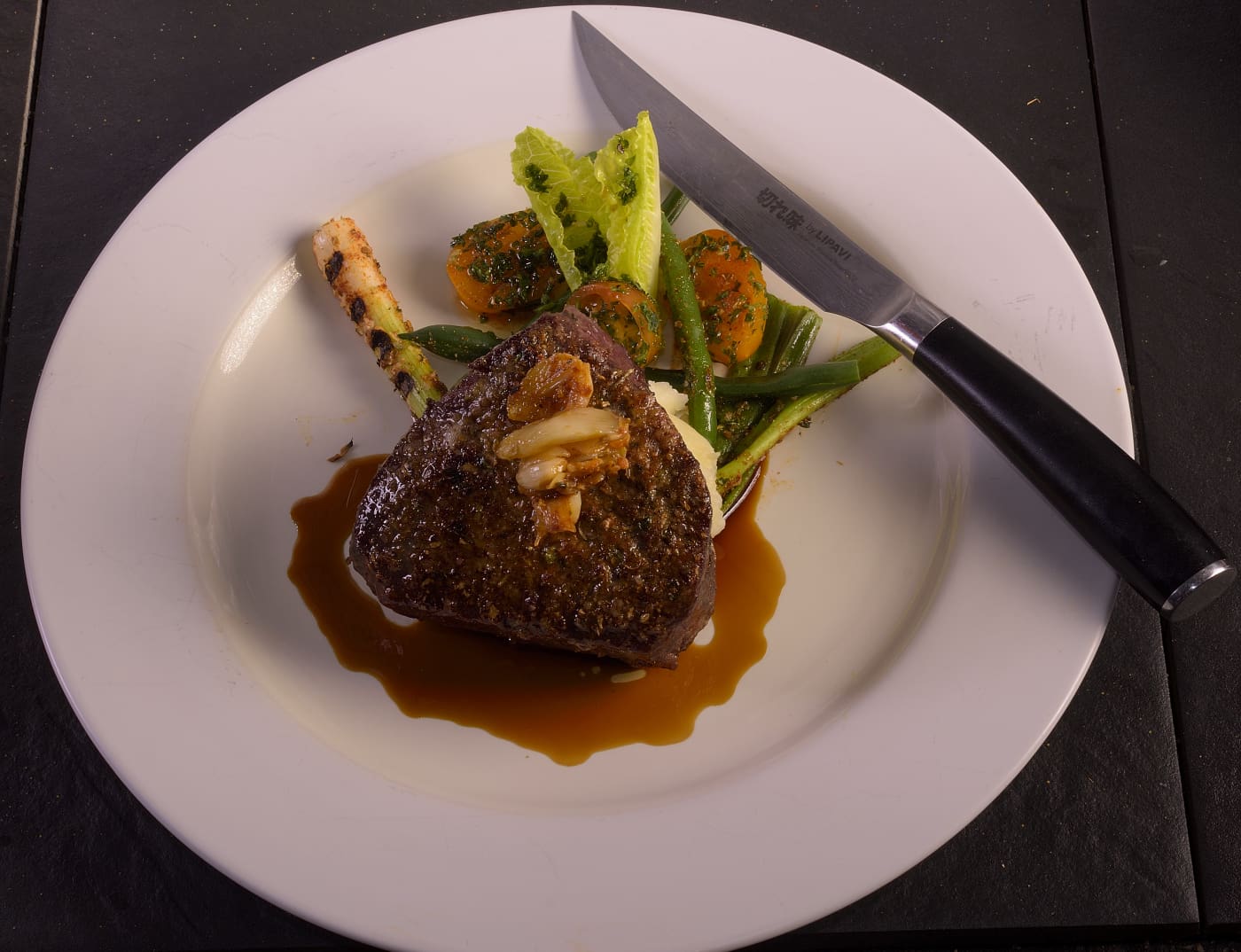
In the picture above and for the purpose of this demonstration only, the steak is crowned with braised garlic. On the plate: mashed potatoes, grilled scallions, green beans, cherry tomatoes, a sprig of Romaine lettuce and a few drops of demi glace.
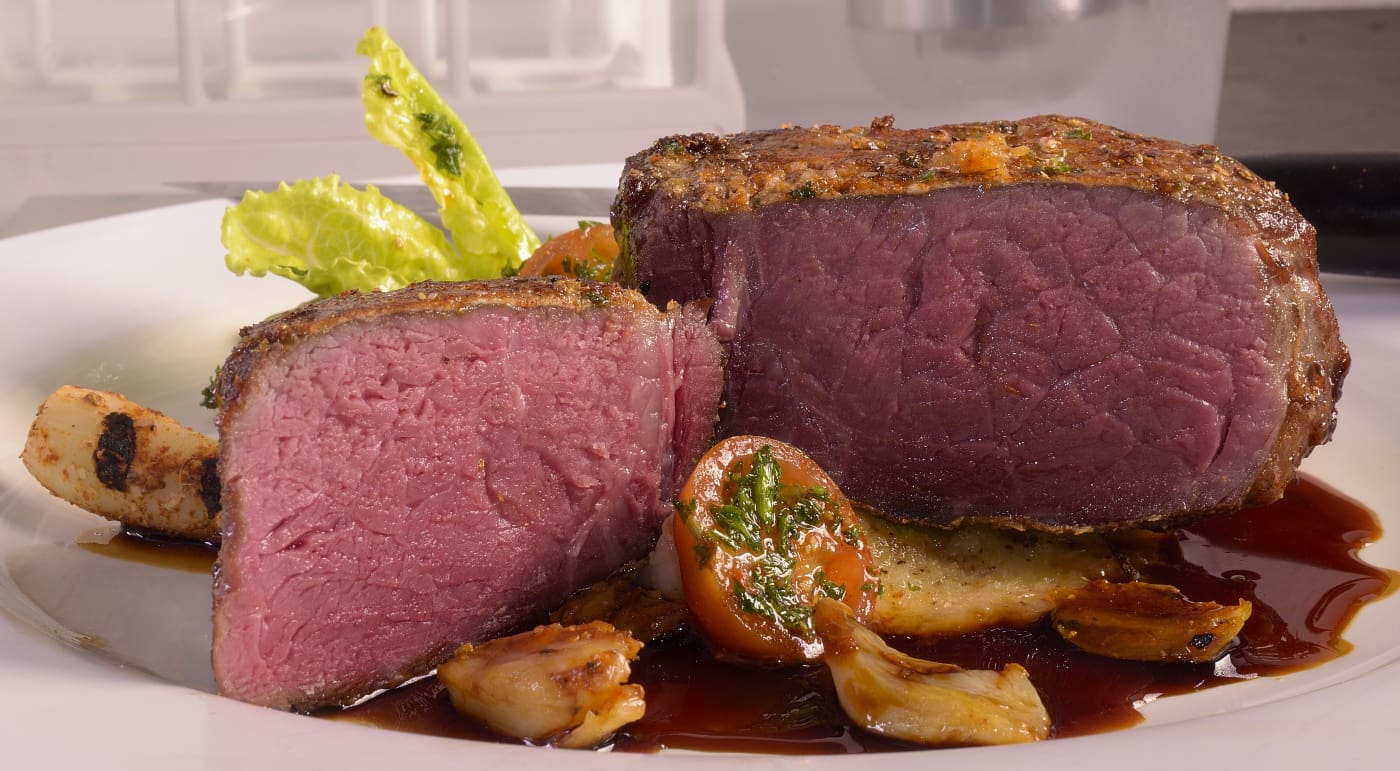
As the methodology promises, the appearance of doneness is uniform throughout the whole steak.
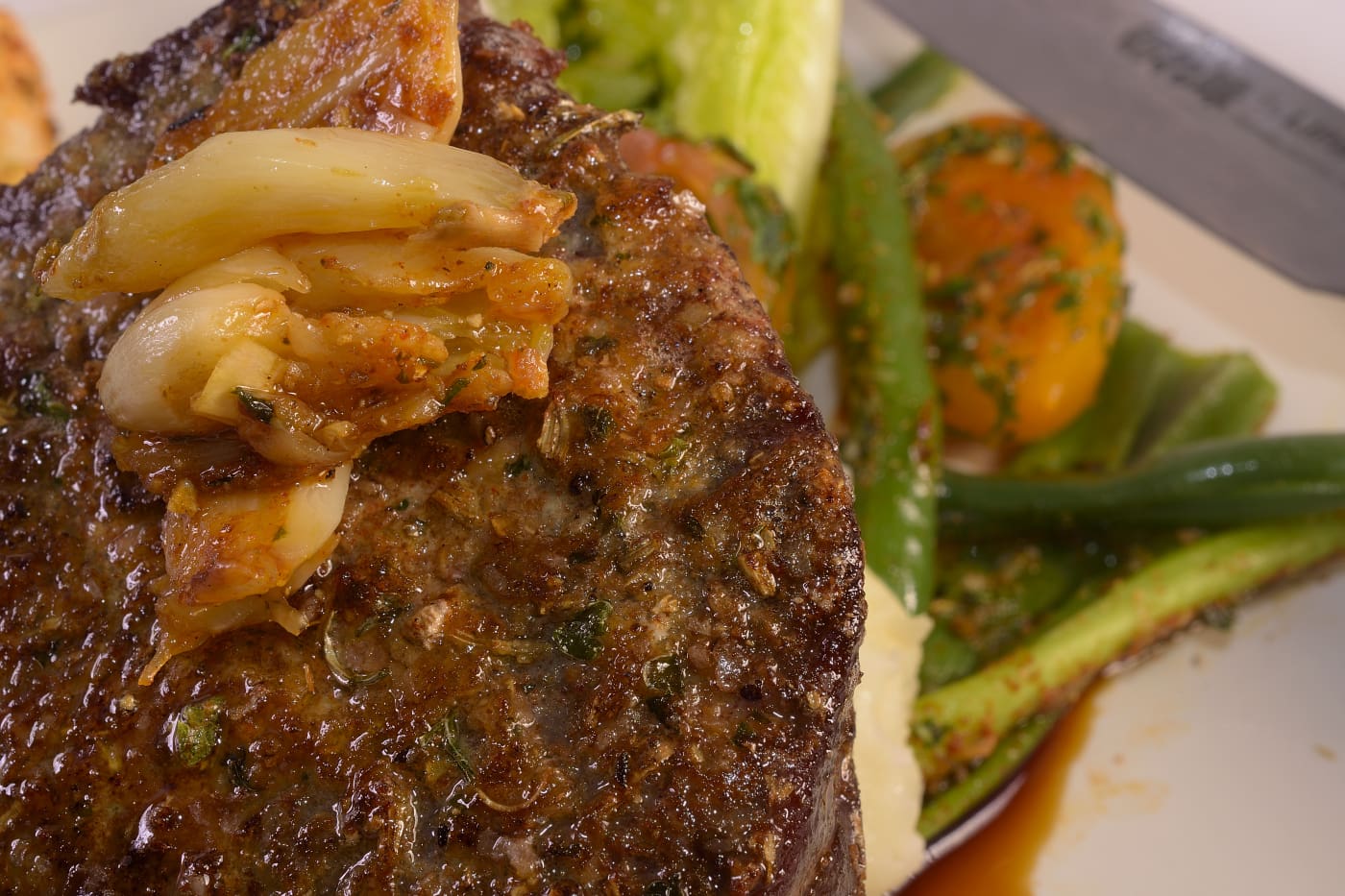
The crust is prominent and durable.

Join us on Facebook at SVR–Sous Vide Resources–and ask me in person how to braise garlic!

Norm
Don’t forget to visit us on Facebook at SVR–Sous Vide Resources; Low Temperature Pasteurization, Sous-B-Q™,
